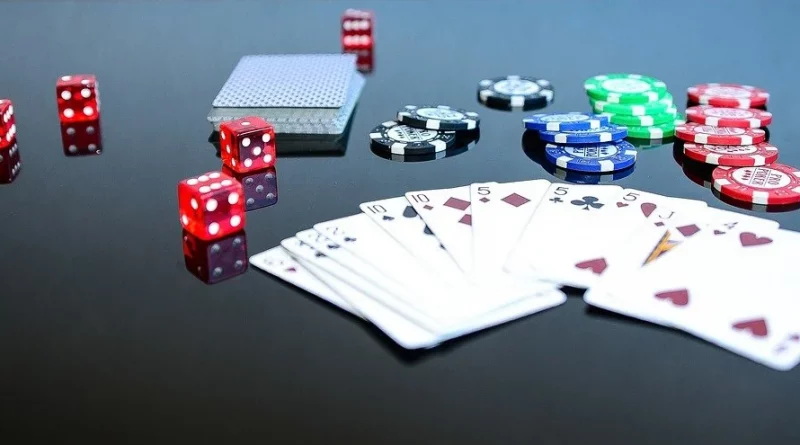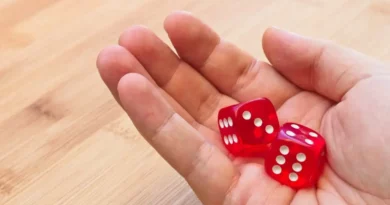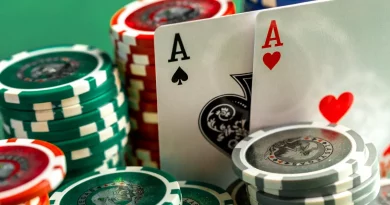How to play craps at the casino
Craps is a classic dice game, often considered one of the most exciting and action-packed offers at a casino. If you want to win big, it’s important to learn about the game – craps rules can vary from place to place, but the basic ones should stay the same. Find out the most important terms in craps lingo (like ‘snake eyes’ dice, or horn bets), as well as the most valuable tips.
History of craps
The history of dice goes very far back, even to prehistoric times. Various civilizations around the world cast dice in order to win money under specific rules – the current dice design, as well as many of the games, originated in ancient Rome. While craps has a much shorter history, it’s still one of the oldest gambling games, having evolved from the 14th century English game called ‘hazard’.
Craps is essentially a simplification of hazard. The name comes from a mispronunciation of the word ‘crabs’, referring to ‘crab eyes’ – a throw known nowadays as ‘snake eyes’: dice having the number one on both of them. Both games are played with two dice, and the outcome depends on the players’ picks before the throw. An interesting fact about craps is that until the early 20th century, it was common for casinos to use weighted dice, which provided an unfair advantage over players. To make the game fair, a new design was introduced, which made it possible to bet ‘against’ the dice (called ‘Don’t Pass’).
For a large part of its history, the game was popular mostly in New Orleans – a city considered the homeland of the current rules of craps. The Second World War brought craps to the American soldiers, who often played it against each other – a variation usually called ‘street craps’. After that, it became widely available in Las Vegas casinos, and then all over the world. Currently, it’s very easy to find in any online casino, which makes it possible to play from any country.
Craps rules
How to play craps at the casino? The rules are easy to pick up even after a single playthrough. The game starts with the players placing their bets, which can be made in a few different ways, including:
- Pass/Don’t Pass – both pay out even money; the outcome depends on the result of the first throw, called the ‘come out’:
- Pass – win on 7 or 11, lose on 2, 3, and 12;
- Don’t Pass – win on 2 or 3, lose on 7 or 11, a tie on 12;
- any other number than those covered by Pass/Don’t Pass bets is considered the ‘point’, if it comes up before a 7 is thrown, you win evens after having placed a Pass, and if the 7 comes up first, then you win evens with a Don’t Pass bet;
- Come – the next number rolled becomes your ‘point’, the rest of the conditions are the same as in the case of a Pass bet;
- Don’t Come – you win if 7 comes up before the point;
- Field – a field bet in craps means you win double on 2 or 12, and evens on 3, 4, 9, 10, and 11;
- Any 7 – you win with 5:1 odds when a seven comes up;
- Any Craps – you win on 2, 3 or 12;
- Hard Ways – two 2’s, two 3’s, two 4’s, or two 5’s;
- Horn – you win on 2, 3, 11 and 12.
Traditionally, each round has its designated shooter who is responsible for the actual throw, but when playing online, this part is simulated. Casinos typically have a requirement of dice hitting the table wall to ensure a sufficiently unpredictable outcome. A round consists of two phases: the ‘come out’ and the ‘point’. When making the ‘come out’ throw, the shooter is said to ‘crap out’ on 2, 3 and 12 – the losing numbers for a ‘Pass bet’. If the shooter throws a seven, they’re required to pass the dice to the person to the left.
Craps odds, betting & payouts
The craps odds are determined by the probability of each outcome when throwing a pair of dice. For most of the throws, the house has an edge ranging anywhere between 1.36% and 16.67%; the exceptions are Pass/Don’t Pass and Come/Don’t Come. Here’s a handy craps payout chart with the actual odds of each throw described above, as well as the payouts most common in casinos:
- Pass – actual: 251:244 (just over 1:1), casino: 1:1;
- Don’t Pass – 976:949 (also just over 1:1) and 1:1;
- Pass, Don’t Pass, Come and Don’t Come after the point is established – from 1:2 to 6:5 depending on the numbers chosen, the house has no edge on those bets;
- Field – real odds of 5:4, the house pays evens on 3, 4, 9, 10, and 11, and 2:1 on a 2 or 12 result;
- Any 7 – 5:1 actual odds with casino payout of 4:1;
- Any Craps – 8:1 and 7:1 respectively;
- Hard Ways – real odds of 8:1 or 10:1, casino payout of 7:1 or 9:1;
- Horn – actual odds of 5:1, the casino pays out 27:4 or 3:1 depending on the throw.
You can also check our article about the myth or truth – is dice control real?
Craps strategy and tips
As you can see, craps table odds can vary a lot when it comes to the house edge. When determining a strategy, it’s important to know the probabilities of various throws, and stick to the safest ones. The most useful tip is to just stick with Pass/Don’t Pass/Come/Don’t Come bets – while they might not be the most exciting, you’ll have a much lower risk of losing money over the long-term.
Craps Glossary
Over the many decades of people from various groups playing the game, a specific craps lingo has developed. Apart from the names of the bets, it’s worth to know the following terms:
- snake eyes – dice landing with a ‘1’ on both of them;
- Big Red – either a throw resulting in a seven or a bet backing that number;
- bones – dice;
- playing right – placing a bet on the Pass line;
- dark side betting or playing wrong – placing a Don’t Pass bet;
- boxcars – two sixes on the dice;
- rolling a natural – a 7 or 11 on the come out throw;
- yo – coming from ‘yo-leven’, a word used to replace ‘eleven’ when placing a bet on that number.
FAQ
Craps is a highly exciting casino dice game that originated from the 14th-century English game called “hazard”. It became popular in New Orleans, a city often considered the homeland of the game’s modern rules. The game expanded its popularity globally during the Second World War among American soldiers, and later featured in Las Vegas casinos and eventually in online platforms.
Craps is played with two dice, and each round consists of two phases: the “come out” and the “point”. The game begins with players placing their bets such as Pass, Don’t Pass, Come, Don’t Come, Field, Any 7, Any Craps, Hard Ways, and Horn. The shooter, who changes every round, then makes the “come out” throw, and subsequent throws are made until a win or loss is achieved.
The optimal craps strategy is generally to stick with the safest bets – Pass/Don’t Pass/Come/Don’t Come. While they may not be the most exciting, statistically they present a lower risk of losing money in the long term because the house edge is lowest on these bets. While chance still plays a significant role, knowledge of these probabilities can inform better betting choices.
The payouts in craps vary depending on the type of bet. Pass and Don’t Pass bets typically payout at 1:1, while Field bets pay even on numbers 3, 4, 9, 10, 11, and 2:1 on a result of 2 or 12. Any 7 has casino odds of 4:1, Any Craps has a payout of 7:1, and the odds for Hard Ways and Horn bets can vary more significantly.
Craps lingo refers to the specific terminology developed over years of play by various groups of players. Some common terms include “snake eyes” (dice landing with a ‘1’ on both), “Big Red” (a throw or bet resulting in a seven), “bones” (dice), and “boxcars” (two sixes on the dice). Also, “playing right” refers to placing a bet on the Pass line, while “dark side betting” or “playing wrong” is about placing a Don’t Pass bet.




